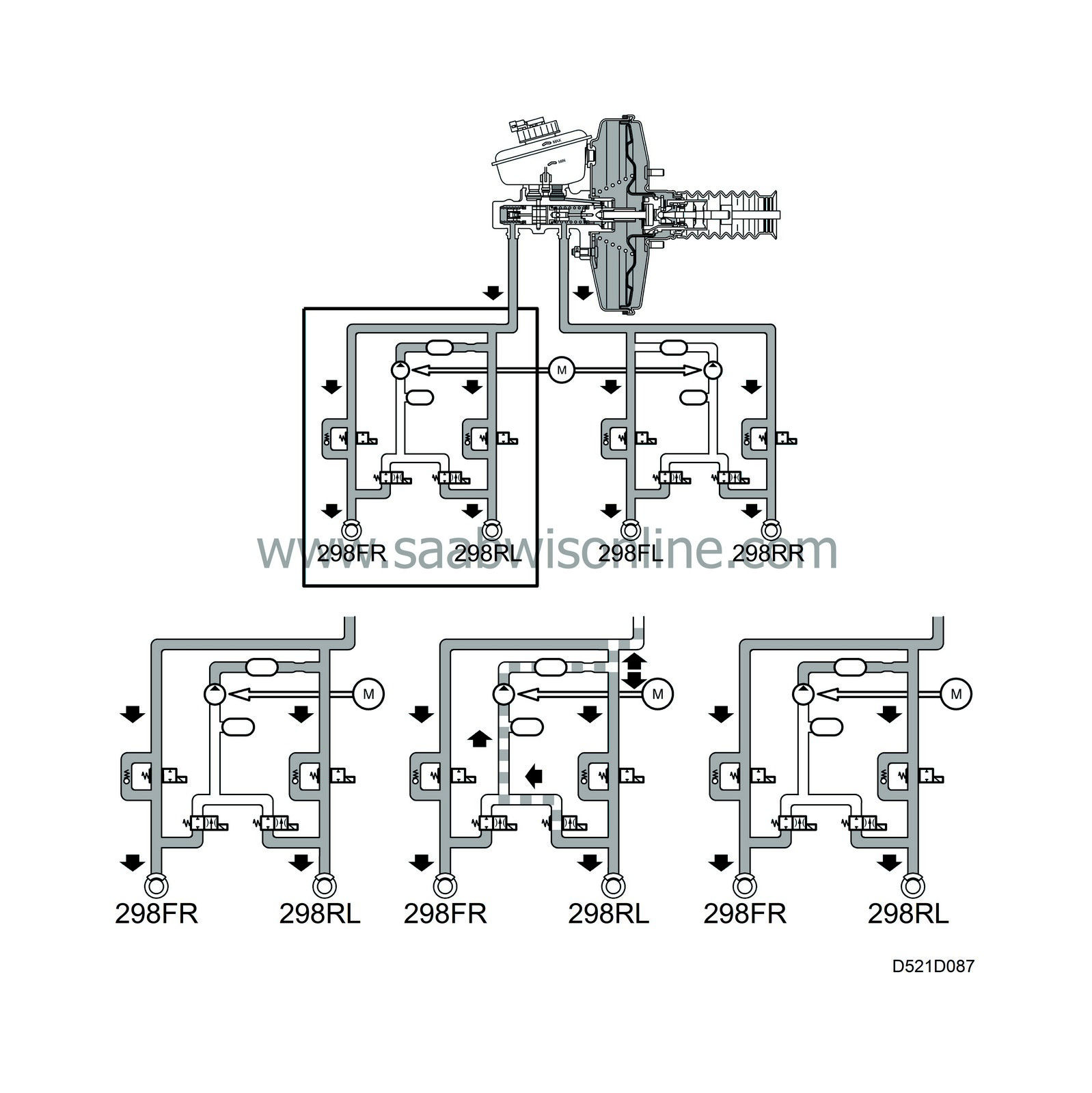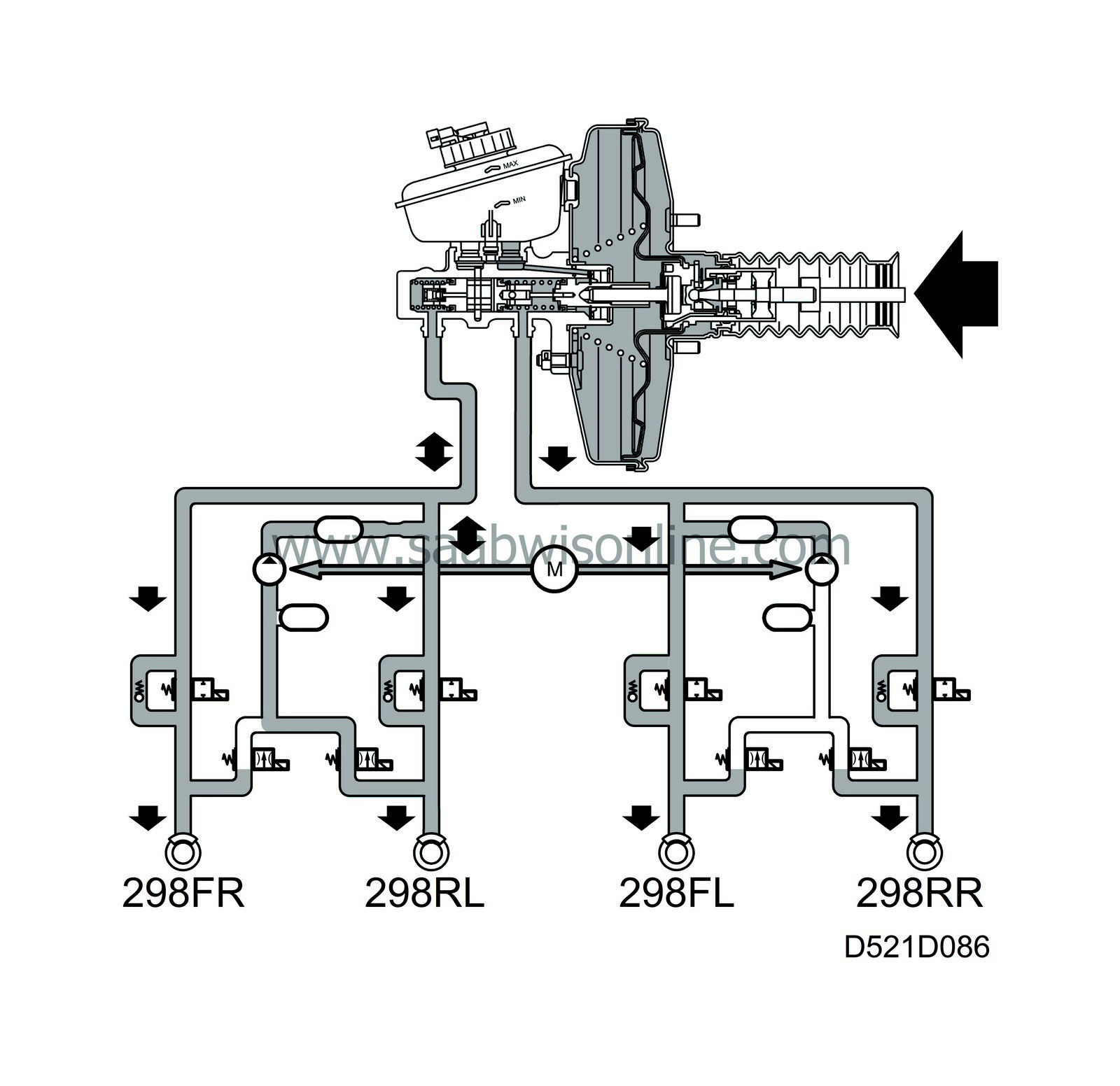Braking with ABS modulation
| Braking with ABS modulation |
The return pump, which returns excess brake fluid to the master cylinder, is activated only when the ABS mode is operative and the outlet valve is open.
The pressure of the additional flow of brake fluid is determined by the brake pressure in the master cylinder, which is in turn proportional to the pressure on the brake pedal. The brake pressure applied to the brake circuits is based on the decrease in speed sensed by the wheel sensors. The control unit regulates the inlet and outlet valves so that maximal braking force is transmitted between wheel and road surface.
ABS modulation continues until either of the following conditions is true:
| • |
The car has been brought to a standstill.
|
|
| • |
The driver has reduced the pressure applied to the brake
pedal such that the road surface is able to take up the brake force
without any of the wheels tending to lock up.
|
|




